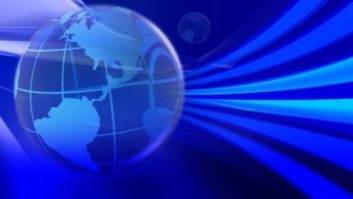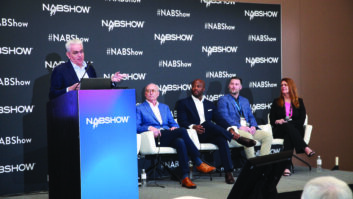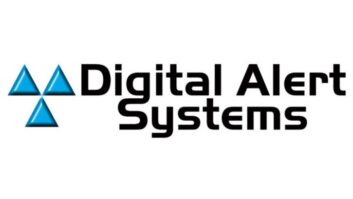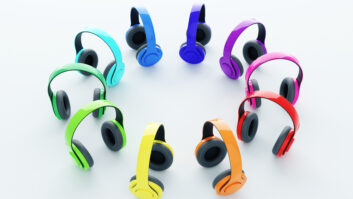
The Seattle-area AM digital driving team, from left: David Layer, NAB; Stephen Lockwood, Hatfield & Dawson; Mike Rhodes, Cavell Mertz; Tom McGinley, CBS Radio Seattle; and Andy Skotdal and Buzz Anderson, KRKO(AM)/KKXA(AM), Seattle. McGinley is also a technical advisor to Radio World, which was not involved in the testing. Not pictured: Jim Hatfield, Hatfield & Dawson; Jon Kasprick, KGRG(AM/FM); and Jeff Welton, Nautel.
Credit: Photo by Andy Skotdal The last planned NAB Labs field tests of all-digital HD Radio signals on the AM band were conducted in October on Seattle’s Fox Sports KRKO on 1380 kHz and Classic Country KKXA on 1520 kHz. IBiquity Digital and several other firms are assisting in the field tests.
NAB EVP/CTO Sam Matheny told attendees at the national SBE convention in October that test participants are crunching data and preparing to present information to the NAB Radio Board, which meets at the end of the month.
NAB Labs hopes to finish processing the field- and lab-test data and submit it to the FCC sometime in 2015. It plans a session about the testing in its Broadcast Engineering Conference next spring; presumably some of the data would be made public then.
Seattle is the largest market in which testing has been conducted. Seattle-Tacoma is Metro Rank #13 based on population, according to Nielsen. The next-largest market in which all-digital testing on the AM band was done was Tucson, Ariz., Metro #62 and home to Cumulus Media’s KTUC(AM).
The Seattle tests also were the first to include 50 kW stations in a large market at a diplexed transmitter site, according to KRKO/KKXA President Andy Skotdal.
His stations were the eighth and ninth tested. In addition to Tucson’s KTUC, others have included CBS Radio’s WBCN, Charlotte, N.C.; Beasley Broadcasting’s WNCT, Greenville, N.C.; Greater Media’s WBT, Charlotte, N.C.; WRPX Inc.’s WDGY, Hudson, Wis.; West Virginia Radio Corp.’s WSWW, Charleston, W.Va.; and WD2XXM, an iBiquity test station in Frederick, Md.
Years ago, before HD Radio receivers were readily available, tests of signal coverage required special reference receivers. Now, engineers with typical HD Radio-equipped cars can drive around the market and measure the all-digital performance, noting coverage for day and night on specific drive routes.
In this case, five rental Ford vehicles were used. Skotdal took part, driving some 1,200 miles and recording data. Other drivers included KRKO/KKXA Engineer Buzz Anderson; NAB Senior Director of Advanced Engineering David Layer; Hatfield & Dawson Senior Electrical Engineer Of Counsel Jim Hatfield and Senior Electrical Engineer Stephen Lockwood; Cavell Mertz Senior Engineer Mike Rhodes; Nautel Regional Sales Manager for the Central U.S. Jeff Welton; KGRG(AM/FM), Auburn, Wash. Chief Engineer Jon Kasprick; and CBS Radio Seattle DOE/MIS Tom McGinley. He is also a technical advisor to Radio World, which was not involved in the project.
The 50 kW KRKO and KKXA turned off their analog signals for periods of time and transmitted all-digital signals during the Oct. 2–6 day and night tests. The stations also aired promos, asking for listener input.
The overall test project consists of three components: field testing to help demonstrate real-world signal coverage; lab testing to establish interference behavior between stations; and allocation studies to understand the impact on FCC rules should all-digital be authorized on the band.
Skotdal was careful not to reveal actual data nor drive routes. We’ve reported that NAB Labs and other personnel involved have said the all-digital signal generally is more robust and that coverage exceeds that of the hybrid digital signal, with coverage dependent on co- and adjacent-channel interference. During a fall Radio Show panel, Layer said the all-digital signal “is significantly better than the hybrid digital AM signal.”
The possibility of allowing all-digital on the band has been raised as part of larger industry discussions about “AM revitalization.” Proponents believe allowing stations the option of going all-digital would fix or dramatically decrease characteristics of hybrid AM HD Radio technology that have generated criticism, namely a smaller digital coverage footprint and potential interference to the host and neighboring stations.
FEEDBACK
Skotdal said his stations received comments about the AM all-digital testing via email, Facebook and phone calls. Station personnel also received digital skywave reception reports from Montana, Oregon and provinces in Canada.

Discussing all-digital AM at the fall Radio Show were Greg Borgen, WDGY(AM), Hudson, Wis.; Glynn Walden, CBS Radio; Andy Skotdal, KRKO(AM)/KKXA(AM), Seattle; David Layer, NAB; and Ben Downs, Bryan Broadcasting.
Credit: Photo by Jim Peck Generally, people with HD Radio receivers liked what they heard, according to Skotdal. “Some said they heard the station with better clarity than with analog in the same location, some said they heard the station farther. Some said they had enough signal [that] they didn’t have to monkey with their AM antenna to get us and that the fading went away for them.”
Not all feedback was positive. Skotdal says a few listeners said they only had analog radios, weren’t about to buy a new digital ones and wondered whether all-digital was going to happen next year. He told listeners that analog AM radios would be able to work for a long time yet, certainly for 10 years or more, because regulatory efforts take time.
According to the Seattle Area Radio Association and Ibiquity Digital Corp., there are approximately 223,907 HD Radio-equipped vehicles in Seattle; those receivers can decode both AM and FM HD Radio.
“Listeners in King County with analog radios can receive approximately 26 FM signals,” said Chuck Maylin, executive director of the Seattle Area Radio Association, who has taken over the GM role at the stations from Skotdal.
Listeners were told that people with analog AM radios would hear silence during the tests and those who own HD Radio receivers would hear all-digital quality “similar” to FM. Those tuned to music-formatted KXXA in particular would notice stereo separation and the full audio range of the country music that’s airing, according to participants.
Reactions to the process from people not involved in the tests were mixed at best.
In comments posted to Radio World’s website, one reader wrote that he wishes KAAM in Garland, Texas would test the all-digital system.
Another suggested that rather than authorizing testing of all-digital on AM, the FCC should enforce Part 15 interference regulations, “increase receiver bandwidth to improve fidelity” and reduce protection for 50 kW clear channels. “And eliminate HD from the band entirely. C-QUAM was a much better system for improving the listener experience.”
A third wrote: “This is not the solution to an AM fix. Increase AM bandwidth to 10 kHz, let each Class C and D stations increase their daytime power levels and go night-time on the Class D’s with a minimum of 250 watts.”
“ANALOG’S TIME IS PAST”
The testing raises the possibility of a “digital sunrise,” an era in which some or all U.S. AM stations would transmit all-digital signals. The possibility was discussed at the fall Radio Show in Indianapolis.
Glynn Walden — senior vice president for engineering for CBS Radio, former iBiquity Digital engineering executive and a “father” of HD Radio — was asked which AM stations might have the toughest time converting. He identified stations with poorly maintained transmitters and antenna systems, which have a hard time fighting through the rising man-made noise level. “The cost of implementing HD Radio is going down, but the cost of fixing your antenna system hasn’t,” he said.
Walden said the current hybrid digital system was always intended to be temporary, with stations able to make the transition to all-digital when it made economic sense.
Going further, Walden says he fears there’s not much indoor listening to AM anymore due to the rising noise floor. “Offering digital service is imperative. Analog’s time is past. It’s time to move on,” Walden declared.
Skotdal said at the show that he’s a fan of a digital sunrise for the FM band as well, and that broadcasters should explore whether to request the option of going all-digital. FM could see such a digital sunrise before AM, he said.
He later told Radio World: “Assuming we hit critical mass on [receiver] penetration, though, there will still be a big field of AM stations unable to transition. HD can be implemented for any AM license, but implementation costs will be asymmetrical from one facility to the next. Licensees of directional AMs, in particular, are the ones who will be disproportionately impacted from a cost standpoint compared to licensees of omnidirectional sticks.”
Should the FCC authorize stations to use all-digital on the AM band, Skotdal tells Radio World he’d like to do so at his stations starting on weekend evenings, and promote that during the week. “It’s an incentive for people to hear it. For stations that want to go in this direction, why hold them back?”
Comment on this or any story. Email [email protected] with “Letter to the Editor” in the subject field.






